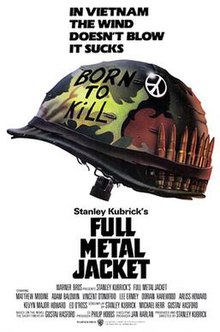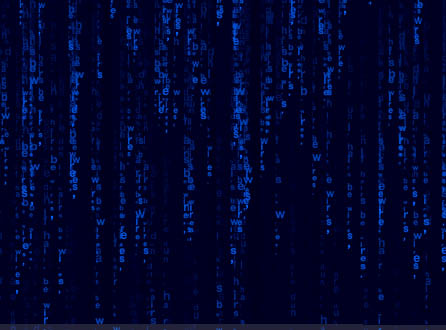It is Veterans Day in the United States. A day to remember those who have served in combat in order to protect our state, our home, our freedom. There is not enough thanking in the world to give the US Army Forces. Thank you.
Simultaneously there is big talk surrounding the US Army’s advertising strategy as the Army is looking for its new advertising campaign. The current campaign by the army revolves around the slogan “Army Strong” and the fist thing that I puzzled me was what that line meant? Who is army strong? Is it the soldiers or the machinery they use? Its a vague tag line, but I guess its catchy. The main purpose of a slogan or tag line is important as a tool to influence perception, specially when it involves an icon such as a logo.
Every generation has its collective personality which comes from environmental variables, a zeitgeist that influence behavior. Our biggest identifiable generation begins at the G.I. Generation a generation who’s parents where raised in a world where the USA was only beginning to gain its own national identity. It was the time of The Spanish-American war, a time when there was a persistant remanence of European culture such as Impressionism in art. This was a time when the US Army was still in its infancy as a modern Army.
Targeting the GI Generation was made by using propaganda that included the famous uncle sam poster.

The generation that followed was the Baby Boomer Generation which was a very influential generation which was far more conservative than the current generations. This is the Generation that was heavily divided on the peace and war issue and when the peace sign and smiley face gained popularity.


The interesting part about the symbols of the time, is that they had to co-inhabit the cultural ecosystem of the time. References on the “Duality of man” was made through the use of symbols in the movie “Full Metal Jacket” When a soldier was asked why he was wearing the symbols in the form of a button.

Generation X followed which is currently taking control of society. The awareness level of this generation greatly increased due to an increase in broadcasting capabilities by radio, television and the telephone. Television gained the capability of acquiring video footage outside of a recording studio with portable video cameras that could be purchased by the masses. Essentially, technology began to infiltrate our personal and private living spaces allowing a stream of messages to bombard us in our very own living rooms. We welcomed this new technology the way we have welcomed mobile phone technology. Generation X grew up with a broadcasting network increase information dissemination at a very rapid pace.
The US Army capitalized on this new network to promote enlistments by using the televisions as a medium to get to Generation X. The slogan that the Army was using at the time was “Be All You Can Be” which was a campaign revolving around the characteristics of Generation X.
What where the characteristics of Generation X? Pop culture is, in a way, a reflection of culture. While Babyboomers could be associated to cultural icons such asElvis Presley, Generation X can be described with Madonna, Michael Jackson, The Doors which where bands that “Gen-Xers” grew up with and who’s characteristics manifested in the form of a new genre in musical expression; Nirvana.
The Army targeted these characteristics in Generation X with their “Be All You Can Be” campaign, which revolved about making the individual a better individual.
In 2006 there was a change in the slogan of the US Army. A reflection on the decrease of people that where enlisting to service. The Army’s new branding hoped to attract a new generation of people that where very unpredictable… at the time.
Generation Y is a very complex generation. It is driven by community and group interaction. They are a generation that revolves around strong family connections and interpersonal relationships. This is the generation that grew up with video games, mobile devices, and the internet. Television has become a very fragmented entity that lacks the ability to connect and interact. The Millennials are those who have realized that television is based on fantasy on specific views that isolates people. They are the ones, that even-though still watch the TV, the TV is not the main source of entertainment. Youtube, Vimeo, The Cheezburger Network, Twitter, and the thousands of news sources that exists in the cloud are the main source of entertainment for the new generations. But by far the most important innovation that has influenced the new generation is the ability to gather data and analyze that data in a casual manner, specifically with the addition of location and emotional connections. Any company, organization or institution that is targeting Millennials needs to understand collaboration, ubiquity, sustainability, memes and filters. The new generations are a generation that has increased awareness and masters of, as Linda Stone put it, Constant Partial Attention. They are the generation that, as Clay Shirky put it, decided to do something with their cognitive surplus. We are in a time of drastic change, and it is making sense to Millenials more than other generations. A time where adopting others as part of our own, is a necessity and not a luxury.
First Sikh Enlisted Soldier:
The new generations are not looking to become “drones” that are in the control of some other person. There is a big misunderstanding that you stop being an individual when you become a soldier. I think the opposite is true. Becoming a soldier makes you part of a big group of people. You actually become an individual in a big group of people that have a similar goal in mind; to protect what matters most, other people. Soldiers in today’s army are not drones, they are the ones controlling the drones literary. Physical computing is the next level of innovation. It is when the computer goes out into the real world and does something. Do something! Literary. How would you like to control a robot from your mobile phone? Well, that is not science fiction any more. Its the reality. Willow Garage is mass producing telepresence devices that are similar in concept, to the ones being deployed by the army. Sooner than later we will see a squad of soldiers be accompanied by a hundred is not thousands of swarm-bots all guided by a couple of soldiers. We currently have the technology that is being widely explored by hackers and artists:
These networked robots will soon have the capability to self organize to accomplish complex tasks. When you have a swarm of thousands of tiny little robots, dealing with them would be like dealing with a beehive that was just attacked or a swarm of locusts. You may be able to fend off against a few hundred before being over ran by the group. Here are some projects in their research stage which will become more familiar as time goes by.
And then there are the bots that the army and institutions are exploring:
These are the things that Millenials are interested in doing. Becoming part of something bigger. Something that they have the ability to make a big contribution to, with out endangering them selves in the process. They are the new tribes that have risen from digital connections, metaverses, LOLz, Hacking video games, and then telling their friends about it. And their world is like being inside “Tron” or “The Matrix”

…but the only difference, is that you can talk to everyone there. Including your enemies.
Now here is a peek at out awesome Armed forces!

One of the things that technology has done to our society is to increase the “small town effect” which means that everyone and their mom knows what everyone is doing. We are all interconnected, including the army and our “enemies.” We are all aware of what the other is doing and this effect is only bound to become more apparent. It would be silly to say that Millennials clearly understand the complexities that our new communication systems have created. But they are definitely more aware of our inter-connectivity than any other generation.
